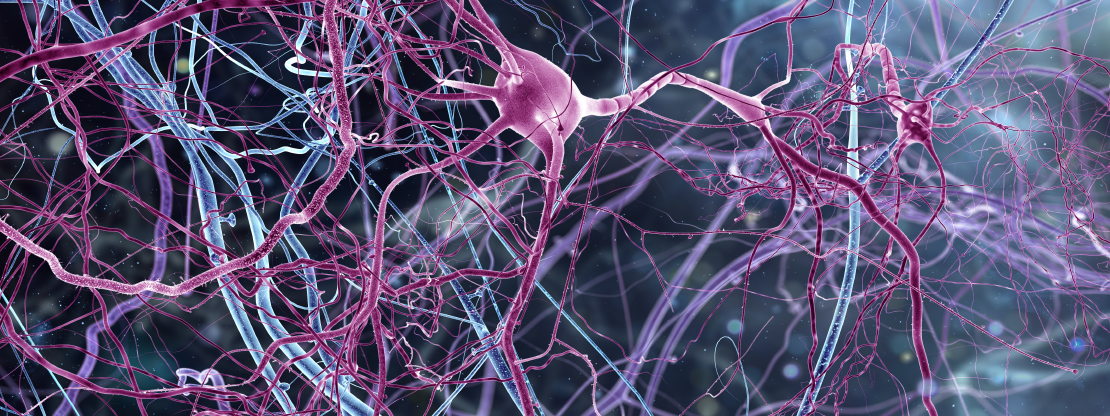Being right-brained or left-brained comes down to molecular switches
Findings may explain why Parkinson’s disease and other neurological disorders impact one side of the body before the other
April 13, 2020

GRAND RAPIDS, Mich. (April 14, 2020) — Scientists may have solved one of the most puzzling and persistent mysteries in neuroscience: why some people are “right-brained” while others are “left-brained.”
The answer lies in how certain genes on each side of the brain are switched “on” and “off” through a process called epigenetic regulation. The findings may explain why Parkinson’s disease and other neurological disorders frequently affect one side of the body first, a revelation that has far-reaching implications for development of potential future treatments.

The study was led by Van Andel Institute’s Viviane Labrie, Ph.D., and published in the journal Genome Biology.
“The mechanisms underlying brain asymmetry have been an elephant in the room for decades,” Labrie said. “It’s thrilling to finally uncover its cause, particularly given its potential for helping us better understand and, hopefully one day, better treat diseases like Parkinson’s.”
Each cell in the brain has the same genes but it is epigenetics that dictate whether those genes are switched “on” or “off.” Labrie and her collaborators found numerous epigenetic differences between the hemispheres of healthy brains that are linked to variations in gene activity. Notably, these differences, or asymmetry, could make one side of the brain more vulnerable to neurological diseases.
For example, epigenetic abnormalities on one side of the brain could make that hemisphere more susceptible to the processes that cause the death of brain cells in Parkinson’s. The differences in cell death across hemispheres leads to the appearance of the disease’s hallmark symptoms, such as tremor, on one side of the body before the other. As the disease progresses, symptoms on the side first affected often are more severe than symptoms on the other side of the body.
The findings also give scientists a vital window into the various biological pathways that contribute to symptom asymmetry in Parkinson’s, including brain cell development, immune function and cellular communication.
“We all start out with prominent differences between the left and right sides of our brains. As we age, however, our hemispheres become more epigenetically similar. For Parkinson’s, this is significant: people whose hemispheres are more alike early in life experienced faster disease progression, while people whose hemispheres were more asymmetric had slower disease progression,” Labrie said. “Many of these changes are clustered around genes known to impact Parkinson’s risk. There is huge potential to translate these findings into new therapeutic strategies.”
Labrie is already starting to look at this phenomenon in other neurological diseases like Alzheimer’s.
The study is one of the first to parse the molecular causes of brain asymmetry. Early research on the left versus right brain was conducted in the mid-20th century by Roger Sperry, whose groundbreaking work with split-brain patients earned him a Nobel Prize.
Authors include Peipei Li, Ph.D., Elizabeth Ensink, Sean Lang, Lee Marshall, Ph.D., and Meghan Schilthuis of Van Andel Institute; and Jared Lamp, Ph.D., and Irving Vega, Ph.D., of Michigan State University College of Human Medicine. The Flow Cytometry Core, Bioinformatics and Biostatistics Core and Pathology and Biorepository Core at Van Andel Institute and Integrated Mass Spectrometry Unit at Michigan State University also contributed to this work. Brain tissue was provided by the Parkinson’s UK Brain Bank, the NIH NeuroBioBank and the Michigan Brain Bank.
This work was supported by Van Andel Institute.
Labrie is supported by the U.S. Army Medical Research Materiel Command through the Parkinson’s Research Program Investigator-Initiated Research Award under award no. W81XWH1810512. Opinions, interpretations, conclusions and recommendations are those of the author and are not necessarily endorsed by the U.S. Army. Labrie also is supported by the National Institute of Neurological Disorders and Stroke of the National Institutes of Health under Award Number R21NS112614 and by Michigan State University through the Gibby & Friends vs. Parky Parkinson’s Disease Research Award. The content is solely the responsibility of the authors and does not necessarily represent the official views of the National Institutes of Health or other granting organizations.
###
ABOUT VAN ANDEL INSTITUTE
Van Andel Institute (VAI) is committed to improving the health and enhancing the lives of current and future generations through cutting edge biomedical research and innovative educational offerings. Established in Grand Rapids, Michigan, in 1996 by the Van Andel family, VAI is now home to more than 400 scientists, educators and support staff, who work with a growing number of national and international collaborators to foster discovery. The Institute’s scientists study the origins of cancer, Parkinson’s and other diseases and translate their findings into breakthrough prevention and treatment strategies. Our educators develop inquiry-based approaches for K-12 education to help students and teachers prepare the next generation of problem-solvers, while our Graduate School offers a rigorous, research-intensive Ph.D. program in molecular and cellular biology. Learn more at vai.org.
Media assets available: Investigator photo
